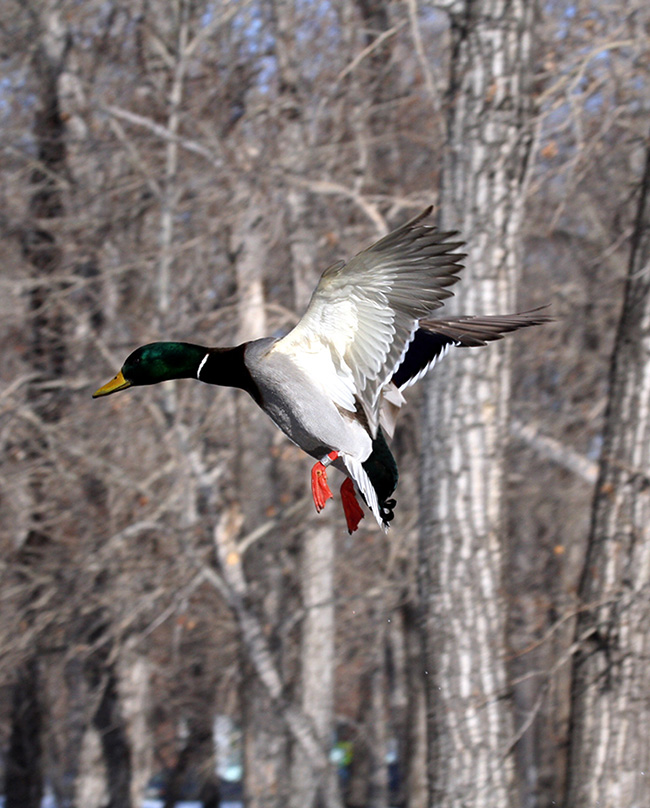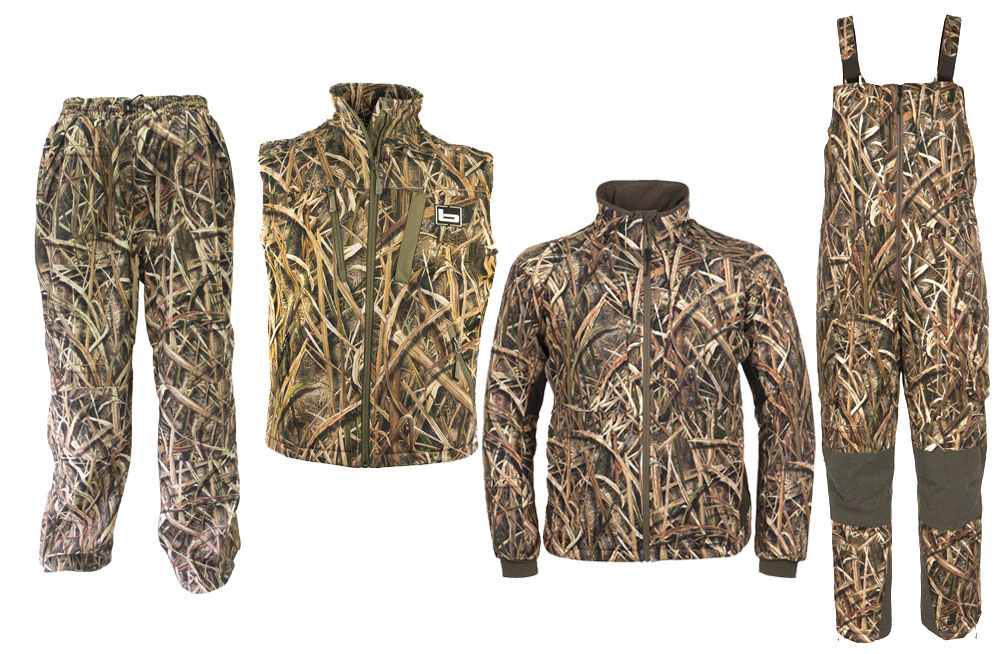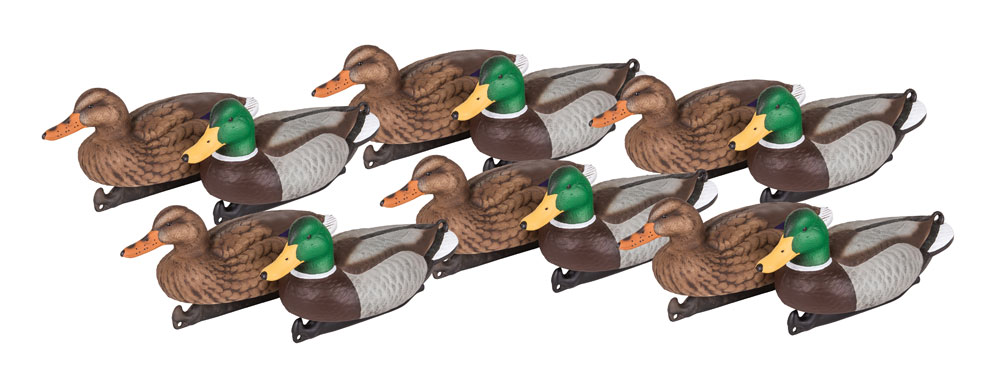By Brad Fenson

Duck Hunting Basics
With my duck call pursed against my upper lip I seductively hailed a high flyer. A brightly-colored drake mallard cupped its wings and soared toward my decoys, the air whistling through the bird’s flight feathers as it quickly dropped in elevation. Then it slammed on the brakes, splaying its bright orange feet and backpedalling its wings for a quick landing. From my set-up on a small watering hole, I swung my trusty 12-gauge in front of the mature duck and squeezed the trigger. My first drake of the day was in the game bag—thanks in large part to my reconnaissance.
Late the previous afternoon, I had followed a flight of mallards and pintails as they left their staging water and headed out for an evening feed. Ducks have a sixth sense for finding the best feed in the country, so I wasn’t surprised that these hungry "quackers" had set their sights on a recently harvested pea field—and that’s exactly where I set up the next day.
Just think like a hungry duck, and you’ll find the birds. Here’s how.
Learn the Land
Whether you hunt ducks on private land or public land, it pays to know a bit about the local agriculture and geography to pinpoint hot spots for hungry birds. With a little investigation, you should also be able to find the “spots on the spots,” such as rises, hills, watering holes, flooded timber, and productive sections of the field. Arkansas duck hunting is much different than hunting North Dakota ducks.
If you don’t know a bean field from a wheat field, however, you need to do some homework. Don’t be afraid to ask landowners and farmers how to identify crops and where to start looking. They possess a wealth of information and can often point you in the right direction. Once you know what the ducks are feeding on, you can reduce your scouting time and ensure you’re looking in the right places.
Scouting for Ducks
By following ducks when you’re scouting, you can pinpoint exactly where they’ll land in their preferred feeding fields. Large concentrations of birds will often bounce around the field, but their initial landing spot usually proves to be the best place to lay out your decoys.
It’s extremely important to pay attention to details. Laying out the decoys just anywhere in the field simply doesn’t produce consistent results. Make note of the exact place the ducks land—that’s the place to set up when you return for the hunt. The terrain may all look the same, but hungry ducks target a specific spot for a reason.
Duck Decoy Spreads
Ducks know there’s safety in numbers, and incoming birds try to crowd into the centre of the flock already on the ground. Keep that in mind when laying out your decoys; leave a hole in the centre to provide a natural landing spot for birds looking to get onto the field. The decoys can be arranged in either a V- or U-shape, with a large landing spot in the middle. For shooting opportunities, set up your blinds at the optimal range from the center of the decoys.
Duck Hunting Small Water
Paying attention to where birds like to water can provide an even more exciting hunt. Just as ducks can find the best food sources, they’re also able to hone in on fresh water to quench their thirst before, during, and after feasting on dry and dusty grain, peas, corn or other favorite feed. Small wetlands, dugouts or freshwater creeks in the middle of, or next to, crop fields can be magnets for thirsty ducks.
Watch closely once the ducks are actively feeding, though, and you’ll see a steady procession of thirsty quackers dive-bombing their favorite water source. Smaller groups are easier to decoy, and in most cases the birds drop in without even circling.
The set-up for small water is both simple and effective. Put up a blind on the edge of the waterhole and throw out a few floating decoys to give incoming birds confidence and draw them tight to your blind. Set up on the upwind side of a waterhole, where the shoreline is protected, and birds naturally congregate. Doing so also means incoming birds will approach and land into the wind.
There are many advantages to shooting over small water. For starters, the birds often approach as singles, doubles or in small flocks. This allows your hunting crew to pick away at them, taking turns shooting and slowly filling the game bag. The continual stream of smaller flocks allows you to be more selective in your gunning, should you decide to only target drakes. Finally, hunting over small water requires less equipment. It takes very little time to set up a blind and throw out a dozen decoys. Often, there’s natural cover that can be used too, making it even easier to set up and stay concealed without needing a blind.
Just remember, follow a duck’s stomach and you’re sure to have an outstanding hunt.
Get Geared Up

It's important to stay concealed, warm and dry while hunting ducks. A good pair of waders is a staple in the duck hunter's wardrobe. You also want to keep your shells and calls handy and your firearm protected. A waterproof bag and gun case ensure your items stay protected when hunting on or near water. And if you're hunting from a boat, you'll want to brush it in and make sure it is camouflaged, especially where it may created a reflection that is easy to spot from overhead ducks.
With adequate preparation, scouting the area and decoying to make room for more company, you're better set up to have a successful hunt. As with anything, the more you get out there, the more you'll learn and have future success.
































